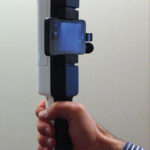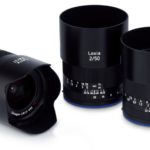
MPC lead the visual effects of The Martian
Posted on Oct 12, 2015 by Alex Fice
Led by Production VFX Supervisor Richard Stammers, and MPC VFX Supervisors Anders Langlands and Tim Ledbury, the Moving Picture Company were lead visual effects studio on Ridley Scott’s The Martian, delivering 425 shots. The team was responsible for all of the scenes that took place on Mars, including shots of Watney working around the Hab, travelling across the Martian surface in his rover, storm sequence and shuttle launch sequences.
MPC joined the project during pre-production, working closely with Richard Stammers to develop the look for the Martian surface. By referencing the archives of NASA Mars missions the team collated and balanced the best references to match the shooting location in Wadi Rum in Jordan. From here the team process focused on turning this environment made famous by Lawrence of Arabia into something more alien. A key component of this was selectively grading the sky and landscape from blue to the bronze and butterscotch of the director’s preferred Martian images.
Conventional tools did not give the team enough control so MPC 2D Supervisor Lev Kolobov created a bespoke tool in Nuke called EarthToMars (ETM). The tool would detect any traces of blue from shots with the Jordan skyline and remove it using sophisticated algorithms that preserved the haze detail in the mountains while simultaneously re-grading the reflected skylight.
MPC’s environments team then created a full-CG version of the Wadi Rum Hab environment using high-resolution photography taken on location in Jordan, adding extra rocks, craters, mountain ranges and a view of a distant Olympus Mons to create a grander landscape. Loosely based on NASA imagery, director Ridley Scott wanted to add more drama to the vistas in the form of fast-moving ice and dust clouds, and drifting surface dust devils. The team created these with Houdini and Maya CG fluid simulations combined with practical elements of pouring salt and dry ice elements. The finished environment was used both to enhance the unit photography from Jordan, and to create a matching background for the greenscreen plates shot on stage in Budapest.
Each astronaut wears a protective helmet with reflective Perspex and gold visor pieces. In order to believably integrate them into the environment, realistic reflections were required for the visors. For most shots, the actors were filmed without the visors in their helmets and MPC added CG visors in post by tracking the helmets and rendering reflections of the CG environment. To complete the effect, the astronauts’ bodies were tracked and CG versions of them rendered to create correct reflections of their actions in the visors.
For the gigantic dust storm that strands Watney on Mars, MPC’s FX team used fluid simulations to create the approaching storm front. Once the storm envelopes the astronauts, the effect was realized largely with practical effects on set, with huge fans blowing smoke and vermiculite particles across the stage. The team added layers of smoke, particles and FX simulations to the live-action plates to enhance the density of the storm, increase its ferocity and balance the look across the sequence.
MPC’s team also worked on shuttle launch sequences, CG vehicles and tackled the challenges of filming in stereo.






















